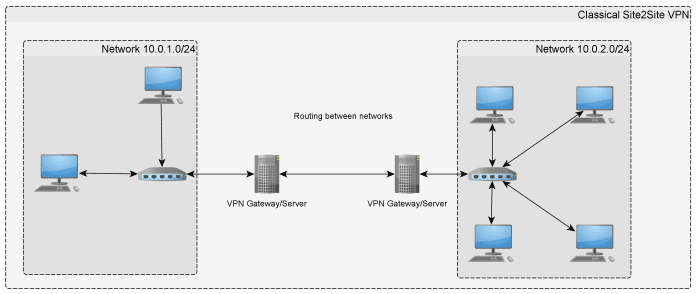Ethernet is a data transport system that uses frames to carry TCP/IP packets between computers. A switch receives and forwards incoming frames based on the header’s source and destination MAC addresses. The switch also maintains a MAC address table to help determine which port a device is connected to and what ports the devices can communicate on. This enables switches to automatically discover which stations are reachable on which ports and to manage the traffic on each port.
Speed
Ethernet switching techniques can improve your network speed by boosting the data transmission and forwarding speeds of individual ports in your switch. These increases are made possible by various Ethernet standards, including Fast Ethernet, Gigabit Ethernet, and 10 Gigabit Ethernet. Switches allow your network to connect multiple devices into segments, creating a virtual local area network (LAN). However, as Ethernet networks expand, congestion can occur in the system, resulting in reduced performance. To alleviate congestion, switches typically use the Carrier Sense Multiple Access with Collision Detection (CSMA/CD) protocol to ensure that packets don’t collide. This helps prevent digital traffic jams in your network and reduces the time it takes to transmit packets. Ethernet switching can also filter and forward frames based on destination addresses. This is accomplished by examining each structure that comes into the switch and learning which devices are located on different segments of your network. When a frame comes into the port, the switch holds it for a few seconds in memory before sending it over the Ethernet cable connected to that port. If the port is busy with other traffic at the time, it can wait to send the frame until that traffic has finished. This is an essential feature for a switch because it ensures that the traffic it transmits matches the speed of its ports. If a switch has ports that can only handle 10 Mbps of data, for example, this can lead to congestion in the network.
Scalability
Scalability is the ability to adapt and change easily when demand increases. This is especially important for computer systems that handle large numbers of users or increased activity. When a system cannot scale, it may slow down or stop working. A network is a complex structure of connected servers and devices that must handle increased traffic quickly and efficiently. Ethernet switching techniques can help your network become more scalable without sacrificing performance. To evaluate your network’s scalability, performing ongoing testing at the hardware and software levels is essential. This will identify performance bottlenecks and determine the best solution. The term “scalable” can describe any system capable of adjusting to new demands and fluctuating activities. This includes businesses, financial markets, and manufacturing firms. In addition, scalability is essential for software programs as well. Applications need to adjust to changing workloads while maintaining the same level of performance. Software scalability takes two different forms: horizontal and vertical scaling. The former involves adding servers or computers to the system, while the latter consists in removing them. For example, massive social networks use horizontal scalability to add more servers to increase the capacity of their network. This allows them to handle more significant traffic while reducing costs and administrative overhead.
Security
Security is a crucial consideration for any network administrator. Aside from the many technical advantages of network switches, they are also vital in preventing hackers from breaching your network. Malicious actors will look for gaps in network devices like switches to exploit to gain entry into a company’s network. A good switch will protect against these threats with features such as port mirroring and spanning trees. Port mirroring, or port-level mirroring, enables the switch to make a copy of the data being sent across all ports. This is useful for performance analysis, intrusion detection, and firewall setting. This feature helps to ensure that a single data frame is never transmitted twice in a row, which can prevent packet forwarding loops and other attacks. It can also help to improve forensics and intrusion detection. For example, if a host sends a frame with a destination MAC address, not in the switch’s addressing database, it will discard it. This MAC address filtering can prevent malicious hosts from sending data to the switch. Aside from learning a device’s MAC address, a switch can also maintain a list of all the LAN stations that are connected to it. This list of addresses is called a “forwarding database.” When a device sends a frame to a particular station, the switch will read its addressing information and send it to that station.
Management
There are several management benefits to using Ethernet switching techniques in your network. These include preventing collisions, easing network bottlenecks, and making it easier to resolve performance issues more quickly. Switches use sophisticated switching logic to keep traffic isolated to only those segments that are needed to receive frames from senders. For example, they will only forward a frame destined for a station in their forwarding database onto a port if it is connected to the destination. They can also suppress frame transmission on a port to prevent stations on shared segments connected to it from seeing the same traffic twice. This helps reduce traffic load and bandwidth consumption by ensuring that only the devices requiring the data receive it. Switches decide how to forward traffic based on the 48-bit media access control (MAC) addresses used in LAN standards. These MAC addresses are stored in a table that the switch updates as it learns about which endpoints can be reached on which ports. These tables are essential to a switch’s ability to control traffic and perform advanced operations such as bridge, hub, and relay. In addition to these crucial functions, newer switches support VLANs, link aggregation, and firewall functions. These are designed to ensure your network is secure and resilient for your business needs.
Apart from this if you are interested to know about Top Web3 Platforms to Explore in 2023 visit our Technology category.








